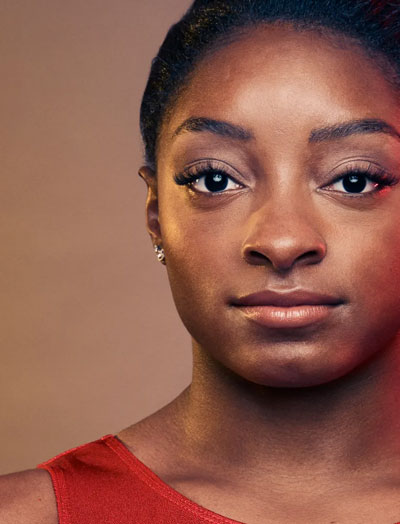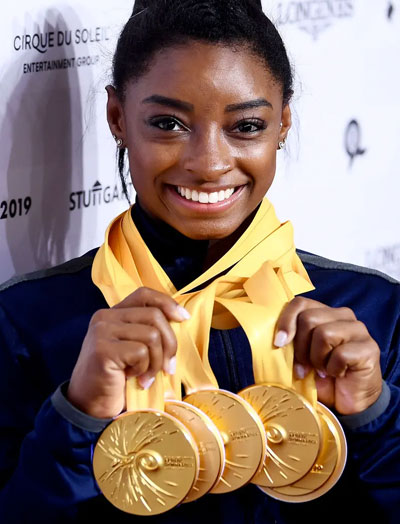DAY 26: SPORTS PT1 – GLOBAL IMPACT: BLACK OLYMPIC ATHLETES OVER THE YEARS:
For black people, the Olympics was an opportunity like none other. It was a chance to prove to the entire world they were good enough, not only to compete but to win. During the Jim Crowe era, despite the progress and contributions Black people were making towards this great nation’s development, they continued to be mistreated and intentionally portrayed as inferior.
Blacks living in American found it hard not to buy into the racist indoctrination–a distorted negative self-view imparted by White oppressors to implement control and domination. But there are funny things about success. First, it can change self-perception, mainly if the attained outcome is contrary to the controlling naysayers. Success breeds confidence, and when demonstrated on a national stage, it’s universally difficult to rebuttal the subsequent result and supporting evidence.
African Americans were breaking through the boundaries of racism, accessing rights and privileges that, in truth, did not need to be earned. Nevertheless, triumph after triumph continued to fuel the flame of self-confidence, quieting over three hundred years of the damaging accusations still screaming in their heads. Indeed, just like the Bible story of Ruth, African Americans were prepared for such a time as this. Preparation breeds confidence, and confidence plus opportunity opens the door for success.
As we know it today, the modern-day Olympics became the golden opportunity for African Americans to compete on a world level. A global demonstration of competence would surely help dispel the myths about their inferiority. Germany, home of Adolph Hitler, was selected by the International Olympic Committee to host the 1936 Olympics. Adolf Hitler rose to power, changing a democratic German government into a racist dictatorship that believed White Aryans to be superior to all other races.
The rest is history. Although Germany won the most medals that year, Jessie Owens led the United States to victory in the more popular track and field events capturing four gold medals. #LetTheTruthBeTold.
That day we all learned a vital lesson. Adolph Hitler and his cronies marginalized the Black athletes in the paper the next day, calling them auxiliaries. However, many White people back home lauded him and the others as heroes. That must have felt good. But, I would be willing to guess there was another group that sided with Adolph’s perspective. The lesson: in the end, it doesn’t matter what people think about who you are that makes you great; It only matters what you think. We no longer have to wait for the validation of others to determine our self-worth.
Cicely Tyson said it best, #LetTheTruthBeTold. “
The moment anyone tries to demean or degrade you in any way, you have to know how great you are. Nobody would bother to beat you down if you were not a threat.”
Now all of that is fine and good, but I can only imagine how excellent Jessie must have felt crossing that finish line–not one time but four. Despite the moral truth of Queen Cicely’s statement, There’s nothing like demonstrating your elite skill based upon your preparation and hard work in front of a crowd of people. They can’t refute the evidence. Not once but four times. Now imagine that on a global level. #LetTheTruthBeTold.
We have chosen to celebrate a select few Hip-Hop pioneers and artist from the latter half of the 20th century for their determination to change the perception of Black peoples contributions and thus change the landscape and future of our country. Today we honor their genius. We must not let their efforts be forgotten or let others bask in the credit of their achievements. Today we change the narrative. #LET THE TRUTH BE TOLD.
“Early Great Black Track and Field Olympians”
JESSIE OWENS AND OTHER NOTABLE OLYMPIANS WHO PAVED THE WAY FOR OTHERS
“Jessie Owens, The Equalizer”
James Cleveland “Jesse” Owens is best known for his remarkable athletic performance at the 1936 Berlin Olympics where he won four gold medals. Owens was born near Oakville, Alabama, on September 12, 1913, the twelfth child of sharecroppers Henry Cleveland and Mary Emma Owens. Owens, the youngest child, was spared much of the difficult farm work because of his persistent pneumonia which nearly killed him twice in his young life.
In 1922 Henry and Emma Owens moved north to Cleveland, Ohio. The move immediately exposed young Owens to regular schooling and participation in athletics. During his senior year at East Technical High School Owens ran the 100-yard sprint in 9.4 seconds, tying the national record at the time and garnering his first national attention.
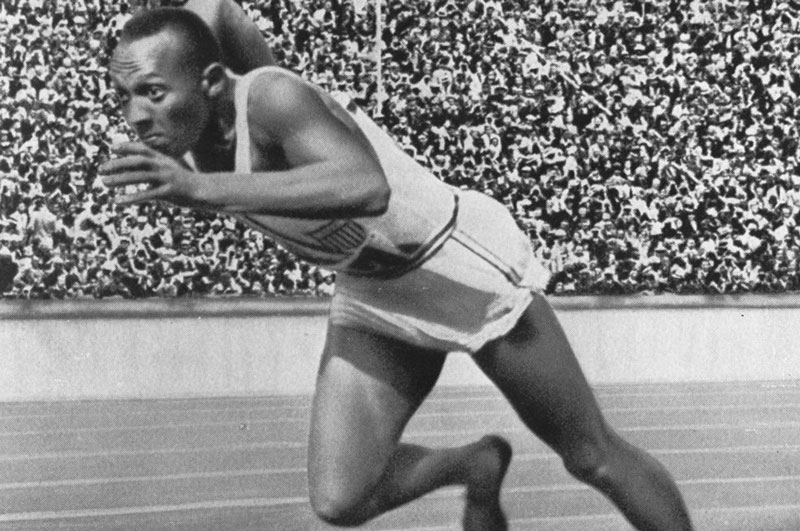
Jessie Owens became an American hero for winning 4 gold medals at the 1936 Olympics
After completing high school in 1933 Owens attended Ohio State University at a time when the institution offered no athletic scholarships. He worked part-time to support himself through college as he continued to set records on the track field. On May 25, 1935 during the National Intercollegiate Championship at Ann Arbor, Michigan Owens set four new world records in the 100 yard sprint, the long jump, the 220 yard sprint, and the 220 yard low hurdles. Read More.
“Women Pioneers”
ALICE COACHMAN AND WILMA RUDOLPH
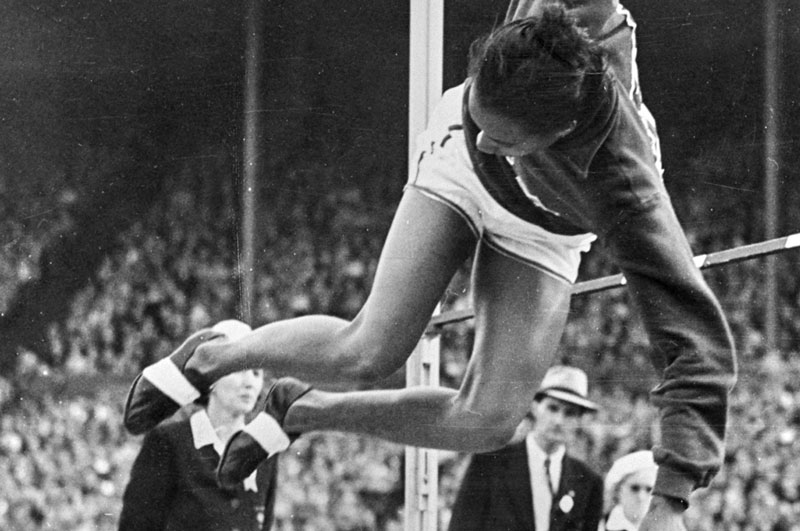
Alice Coachman became the first African American woman from any country to win an Olympic Gold Medal when she competed at the 1948 Summer Olympics in London, UK. Born November 9, 1923, in Albany, Georgia, to Evelyn and Fred Coachman, Alice was the fifth of ten children. As an athletic child of the Jim Crow South, who was denied access to regular training facilities, Coachman trained by running on dirt roads and creating her own hurdles to practice jumping.
Even though Alice Coachman parents did not support her interest in athletics, she was encouraged by Cora Bailey, her fifth grade teacher at Monroe Street Elementary School, and her aunt, Carrie Spry, to develop her talents. After demonstrating her skills on the track at Madison High School, Tuskegee Institute offered sixteen-year-old Coachman a scholarship to attend its high school program. She competed on and against all-black teams throughout the segregated South.
In 1943, Coachman entered the Tuskegee Institute college division to study dressmaking. She played on the basketball team and ran track-and-field, where she won four national championships for events in sprinting and high jumping. Coachman completed a degree in dressmaking in 1946. In 1947, Coachman enrolled in Albany State College (now University) to continue her education. Coachman completed a B.S. degree in Home Economics with a minor in science at Albany State College in 1949 and became teacher and track-and-field instructor. Read More.

Alice Coachman 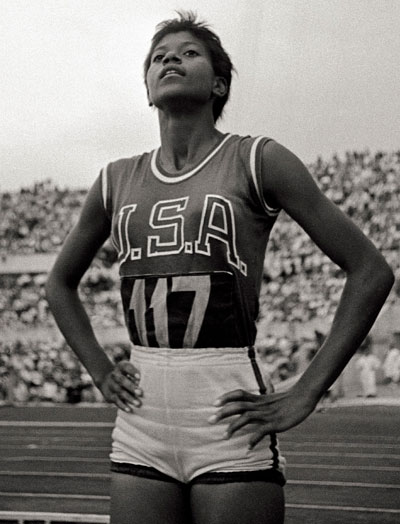
Wilma Rudolph
Wilma Rudolph was born on June 23, 1940, in St. Bethlehem, Tennessee, one of the eight children of Ed and Blanche Rudolph. At birth, she weighed only four-and-a-half pounds and had numerous health issues as a child. She suffered from double pneumonia twice and scarlet fever once before she was four years old. She had polio and suffered paralysis in her left leg. For two years, her mother brought her to Meharry Medical College in Nashville for weekly treatment. Her family also massaged her leg at least four times daily. From ages five to nine, she wore a metal brace on her leg. During that time, she noticed the trips were always made on segregated buses that required African Americans sit in the back.
Rudolph entered Cobb Elementary School in Clarksville, Tennessee in 1947, and it was there that she discovered her passion for sports. In eighth grade, she joined the track team, even though basketball was her first love, and competed in five different events in high school. By the age of 16, she was a bronze medalist in the 1956 Olympics. In September of 1958, she entered Tennessee State University majoring in elementary education and psychology.
Wilma Rudolph entered the 1960 Olympics and became the first American woman to win three gold medals: the 100 meter dash, 200 meter dash and the 4 x 100 meter relay. She also set world records for all three events. Read More.
“Never underestimate the power of dreams and the influence of the human spirit. We are all the same in this notion: The potential for greatness lives within each of us.”
WILMA RUDOLPH
“world’s Fastest Man”
THE ORIGINAL FLASH “BULLET” BOB HAYES
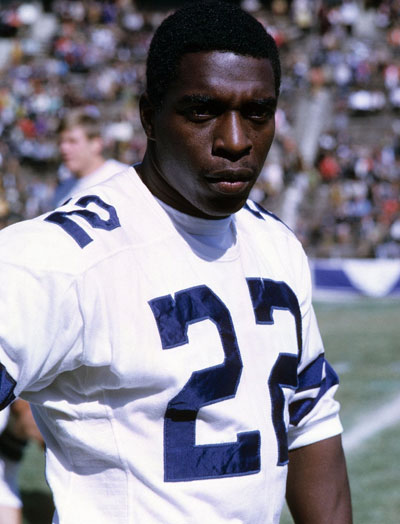
Bob Hayes Played for the Dallas Cowboys 
So Fast Nicknamed “Bullet”
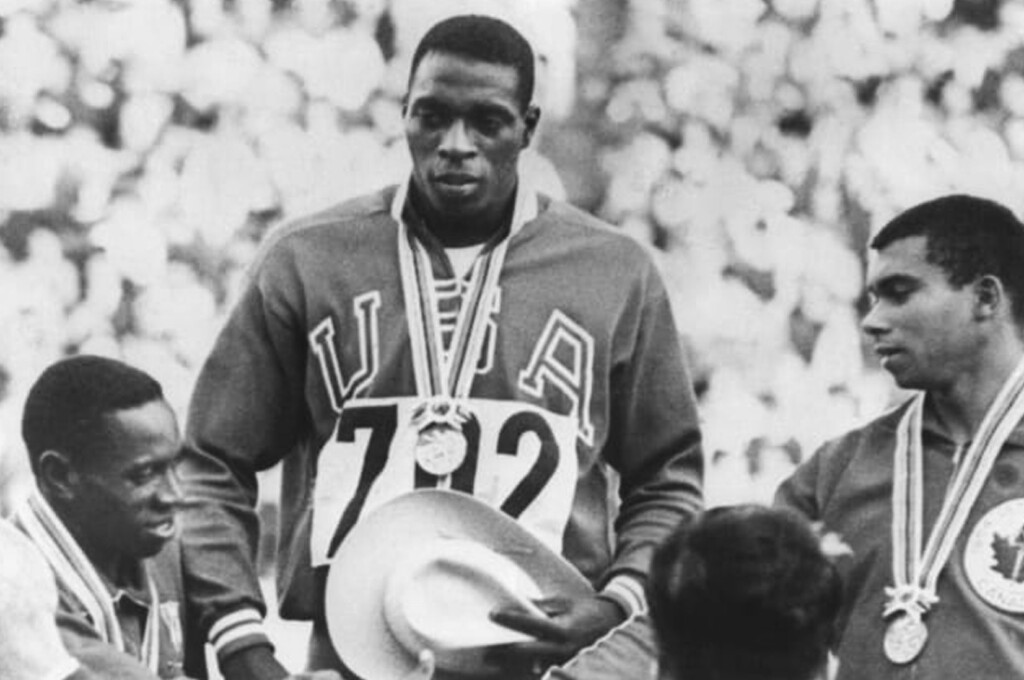
Bob Hayes is arguably the fastest sprinter of all time before the Usain Bolt era. During his four years at Florida A&M, Hayes lost only two of 62 finals at 100y or 100m. At 100m he had a best time of 10.06, which he clocked in the Olympic final on a cinder track after running a wind-assisted 9.91 in the semi-finals. Hayes was the first runner to run 100y in 9.1, and the first man to better six seconds for 60y indoors. Hayes won the AAU 100y for three straight years starting in 1962 and the NCAA 200m in 1964. From 1962-64 he won 49 consecutive races over 100 yards or 100 metres. His anchor leg in the 1964 Olympic relay, making up a four-meter deficit, was a fitting climax to a truly brilliant career. Estimates of his time range as low as 8.6 for the 100 meter leg, with an estimated 100y time of 7.7 seconds.
The relay was Hayes’ final track race and upon his return home, he signed a pro football contract with the Dallas Cowboys. As a wide receiver and punt returner he became one of the great players of the game and should be credited with revolutionizing pass defense. Man-to-man coverage was woefully inadequate in coping with his speed, and it ushered in the era of zone defense in pass coverage. Hayes played pro football for 11 years – 10 with Dallas and a final one with the San Francisco 49ers. He finished with 371 receptions, and a career average of 20.0 yards/catch, one of only 6 NFLers to average 20 or more yards per catch for a career. He led the NFL in 1965 and 1971 in yards/catch and in 1968 with average punt return yardage and his career average of 11.1 yds per punt return is 19th all-time in the NFL, through 2016. Through 2016, Hayes is the only athlete to possess both an Olympic gold medal and a NFL Super Bowl ring (1972). Learn More.
“More Recent Olypians”
CARL LEWIS AND EDWIN MOSES
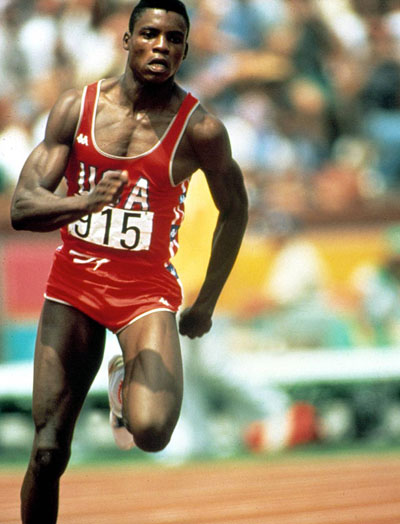
Bob Hayes Played for the Dallas Cowboys 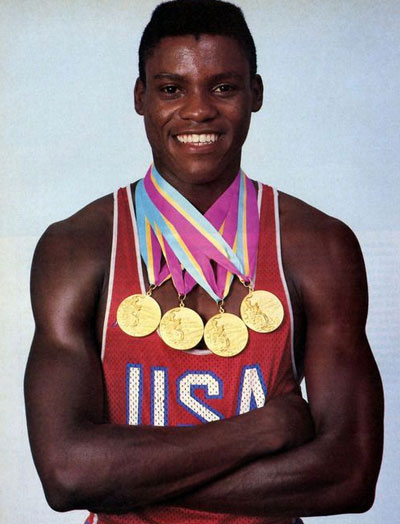
So Fast Nicknamed “Bullet”
Carl Lewis was a successful track and field athlete whose career spanned two decades from 1979 to 1997. He won ten medals as a member of five Olympic teams and won ten World Championship medals.
Lewis was born in Birmingham, Alabama, on July 1, 1961, to William McKinley Lewis, Jr., a former football player and member of the Tuskegee Institute track team, and Evelyn Lawler, who attended Tuskegee on a track-and-field scholarship and participated in the Olympic Games in 1952. The third of four children, Carl moved with his family to Willingboro, New Jersey, in 1963. The Lewis parents moved to the community to coach the Willingboro Track Club. Lewis competed in his first track meet at age nine. By his junior year at Willingboro High School, he had become one of the best long jumpers in New Jersey, reaching his personal goal of more than twenty-five feet when he jumped 25 feet, 9 inches.
After considering multiple offers, Lewis decided to attend the University of Houston where Coach Tom Tellez reworked his long jump and developed him as a sprinter. Lewis broke records and won indoor and outdoor collegiate and national titles in the long jump and sprint. In 1981, he received the Sullivan Award as the most outstanding amateur athlete in the United States. The following year Lewis received the Jesse Owens Award, given to the outstanding track and field performer of the year. Read More.
Edwin C. Moses, an Olympic champion, sports administrator and diplomat, and businessman, is one of the most respected and recognized athletes of our time. He has fully served and promoted the Olympic movement, and fostered the development of drug-free sports and the rights of amateur athletes at all levels. His experience as a distinguished Olympic champion and world record holder has earned him the esteem of the international sports community.
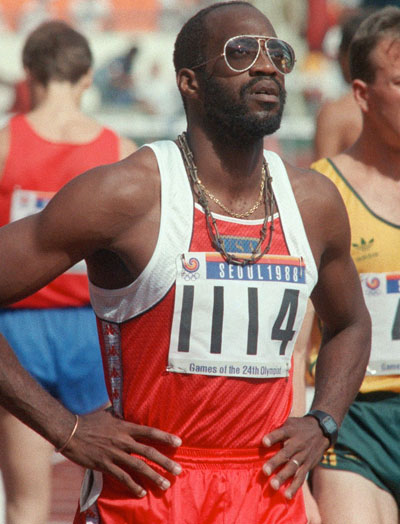
Bob Hayes Played for the Dallas Cowboys 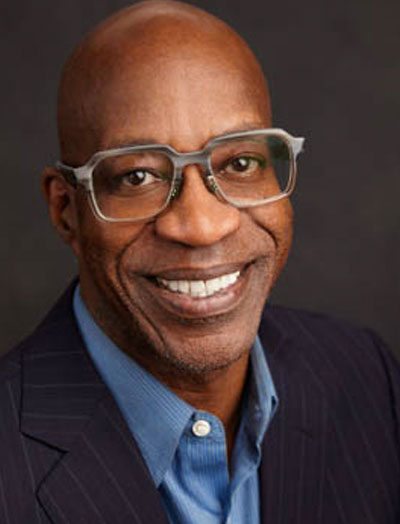
So Fast Nicknamed “Bullet”
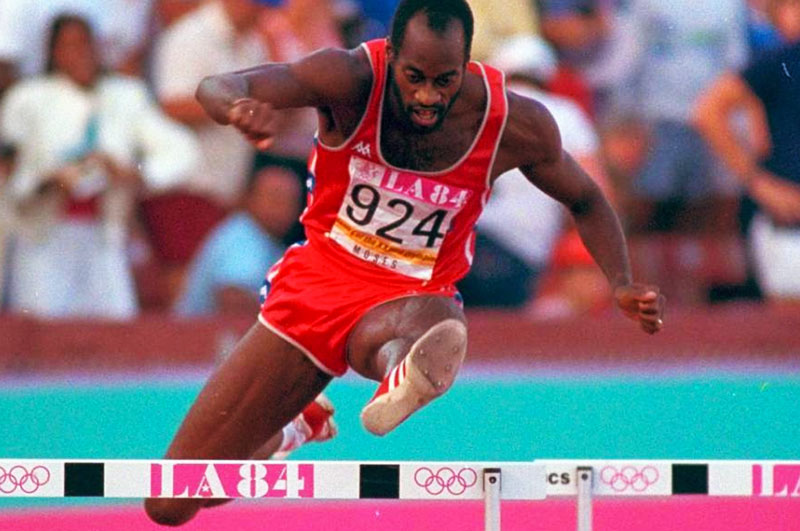
Moses, a physicist from Morehouse College in Atlanta, Ga., is known for utilizing the applied sciences to perfect the technical aspects of his athletic performances in his event, the 400-meter hurdles. This knowledge also enabled him to create, implement, and administer the world’s most stringent random and out-of-competition testing systems for performance-enhancing drugs in sports.
Born Aug. 31, 1955, in Dayton, Ohio, as the second of three sons, Edwin began his athletic career in age group competitions and later in high school in the 180-yard low hurdles and 440-yard dash. Because of his parents’ influence on him as educators, he accepted an academic scholarship in engineering from Morehouse College rather than an athletic scholarship elsewhere. Read More.
“All In The Family”
JACKIE JOYNER-KERSEY AND “FLO-JO” FLORENCE GRIFFITH JOYNER
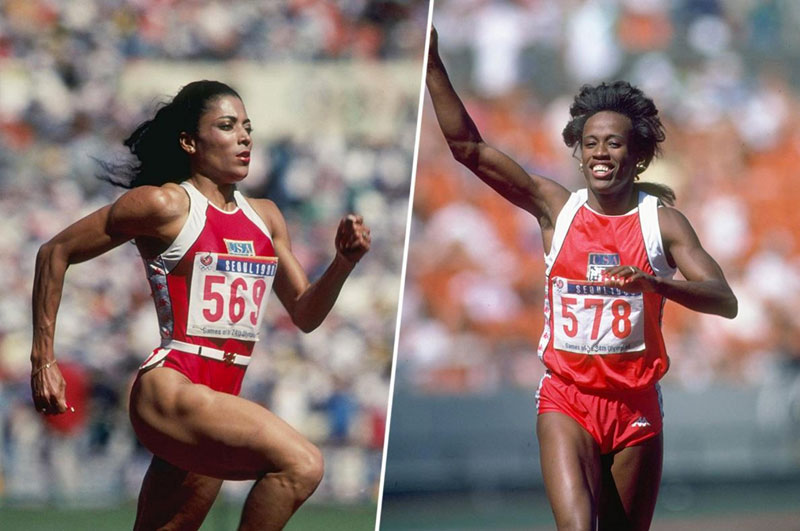
“Flo-Jo” Florence Griffith-Joyner- and Sister in-law, Jackie Joyner-Kersee dominated women’s olympics for over a decade.
American track and field great Jackie Joyner-Kersee won three Olympic gold medals and numerous national titles during her record-setting career.
Jackie Joyner-Kersee is one of the greatest track and field athletes in American history. The first American woman to win an Olympic gold medal in the long jump and the first woman to compile more than 7,000 points in the seven-event heptathlon, Joyner-Kersee went on to win three golds, a silver and two bronze medals over four separate Olympics. She was named Sports Illustrated for Women‘s top female athlete of the 20th century.
Joyner-Kersee was born on March 3, 1962, in East St. Louis, Illinois. The daughter of teenage parents, she endured financial hardship while growing up, but soon rose above the pack with her athletic prowess. As a teen, she won the National Junior Pentathlon championships four years in a row, and received widespread honors in high school in various sports, including track, basketball and volleyball. Joyner-Kersee thrived as a basketball and track-and-field star, and during her junior year, she set the Illinois high-school long jump record for women, with a 6.68-meter jump. Read More.

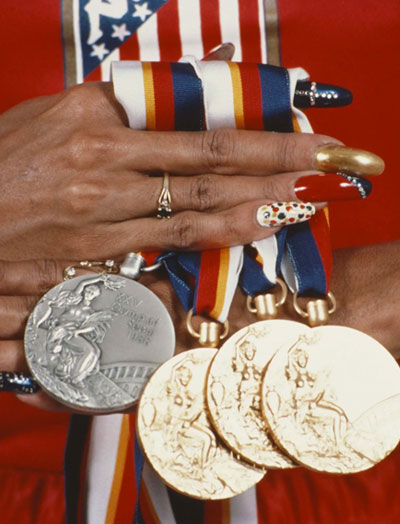
Flo Jo’s Medals 
Jackie’ Medals
Born Florence Delorez Griffith on December 21, 1959, in Los Angeles, California, Florence Griffith Joyner was the seventh of 11 children. Joyner and her siblings were raised primarily by their mother in the impoverished Watts neighborhood of Los Angeles. She began competitive sprinting at the early age of seven, and practiced by chasing jack rabbits in the California desert while visiting her father. After breaking her high school sprint records, Joyner gave up racing at age 19 in order to help support her family.
Sprinting coach Bob Kersee found Joyner working as a bank teller in 1979, and convinced her to train with him at the University of California, Los Angeles (UCLA).
Joyner won the Silver Medal in the 100m dash at the 1984 Olympics in Los Angeles, although her flamboyant style attracted more attention than her speed. That would change while qualifying for the 1988 Olympics, when she shattered the world record in that event with a time of 10.49 seconds. She easily won the Gold Medal in that event, and went on to break another world record in the 200m with a time of 21.34 seconds. Both records are still standing, and her times are faster than the men’s records in many countries.
In 1988, Joyner was named the Associated Press Female Athlete of the Year and the United States Olympian Committee Sportswoman of the Year. She was inducted into the U.S.A. Track and Field Hall of Fame in 1995 and is a recipient of a Distinguished Service Award from the United Negro College Fund. Read More.

“The Goat”
AMERICAN GYMNAST SIMONE BILES.

is an American artistic gymnast. She is a three-time world all-around champion (2013-2015), three-time world floor champion (2013-2015), four-time United States National all-around champion (2013-2016), and a member of the gold medal-winning American teams at the 2014 and 2015 World Artistic Gymnastics Championships. Biles is also a 2016 Olympic individual all-around, vault, and floor gold medalist. She was part of the gold medal-winning team at the 2016 Summer Olympics in Rio de Janeiro, Brazil and also won a bronze medal in the balance beam during those games.
Simone Biles was born on March 14, 1997, in Columbus, Ohio to Shanon Biles and Kelvin Clemons. Her mother, Shannon, was unable to take care of Biles and her siblings Ashley, Tevin, and Adria due to her drug and alcohol addiction. Biles and her sister Adria were taken in by their grandparents, Ron and Nellie Biles, who lived in the north Houston suburb of Spring, Texas. Biles’s grandparents eventually adopted the pair in 2003. By the age of six Biles was involved with gymnastics and enrolled in a training program at Bannon’s Gymnastix in Houston. By the age of eight she started training with gymnastics coach Aimee Boorman.
Biles began competing as a gymnast in 2007. In the 2011 American Classic in Houston, Texas, the fourteen-year-old placed third in the all-around event, first on vault and balance beam, fourth on floor exercise, and eighth on the uneven bars. Later that year, Biles competed at the 2011 CoverGirl classic in Chicago, Illinois where she placed twentieth all-around and fifth on balance beam and floor exercise.
WATCH FULL DOCUMENTARY MOVIE OF SIMONE BILES LIFE. |. VISIT SIMONE BILES WEBSITE
If you’re having fun, that’s when the best memories are built.”
SIMONE BILES
Watching Biles compete is like watching poetry in motion — her body is lyrical in movement, and those movements are full of resonance. And while the facts that she has won three straight world titles and hasn’t lost the all-around category at a meet since March 2013 are impressive enough on their own, it’s even more impactful when you consider the journey that brought her to this point. Biles’ mother struggled with substance abuse on and off, and as a result, Biles herself spent time in the foster system at an early age before being adopted by her grandparents in Houston at the age of 3. She discovered gymnastics by accident at age 6 (a coach spotted her copying gymnasts on a daycare field trip) — and the rest, as they say, is history. Today, she is the first African-American person to be a world all-around champion and only the second woman in history to win three consecutive world titles.
Content provided courtesy of History.com, Britannica.com and Wikipedia.com, Biographies.com, Blackpast.com, notablebiographies.com, majortaylorassociation.com, bustle.com and youtube.com. All Rights Reserved.


